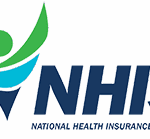Ghana’s healthcare insurance market has evolved into a pivotal sector underpinning the country’s quest for universal health coverage. Since the establishment of the National Health Insurance Scheme (NHIS) in 2003, the scheme has rapidly expanded to cover a growing share of the population, complemented by an emerging private insurance industry that seeks to offer more specialized and higher-quality services.
This dual public-private framework is financed through a combination of value-added tax top-ups, formal-sector payroll contributions, and member premiums, reflecting a hybrid approach designed to balance affordability with sustainability. The government’s commitment to widening insurance coverage has been evident in its policy design, which subsidizes vulnerable groups, including children under 18 and elderly Ghanaians over 70, to ensure equitable access.
Contributions from formal sector employees and payroll taxes provide the bulk of revenues, while informal-sector participants contribute flat-rate premiums, adjusted annually to reflect economic realities. Regulatory oversight by the National Health Insurance Council weaves together these funding streams, aiming to maintain the financial viability of the NHIS while controlling cost pressures within accredited facilities.
In recent years, technological innovation has emerged as a driving force reshaping the market landscape. Digital enrollment platforms and mobile payment systems have streamlined premium collection and claims processing, reducing administrative delays and plugging loopholes that once fostered fraudulent claims. Insurers are increasingly leveraging telemedicine applications and data-analytics tools to monitor risk, personalize coverage, and deliver preventive-health services. This focus on digital solutions has not only enhanced operational efficiency but also tapped into growing consumer demand for convenience and transparency in healthcare transactions.
Despite these advancements, persistent challenges threaten the sector’s long-term stability. Low levels of public awareness and understanding of insurance benefits continue to depress uptake in rural and low-income urban communities. Affordability remains a barrier for many informal workers, whose irregular incomes make even modest premiums difficult to sustain. Gaps in healthcare infrastructure, particularly in diagnostic and specialist services, exacerbate service delivery disparities between urban centers and remote districts. Furthermore, fraudulent claims and abuse of the system strain public finances, underscoring the need for robust fraud-control mechanisms and stronger enforcement of accreditation standards.
Against this backdrop, the market presents compelling investment opportunities for both domestic and international stakeholders. There is significant scope for private insurers to develop innovative micro-insurance products tailored to informal workers and small enterprises, embedding wellness and preventive-care incentives that can lower long-term costs. Technology firms offering telehealth platforms, electronic medical records solutions, and AI-powered risk-assessment tools stand to benefit from partnerships with insurers and government agencies. Strategic collaborations between hospitals, pharmacies, and insurers to create integrated care networks also promise to streamline patient pathways and improve health outcomes.
Government policy continues to evolve to support sector resilience. Reforms under consideration include tiered premium structures that better reflect income levels, expansion of coverage to include a broader array of chronic-disease management services, and strengthened regulatory frameworks to enforce quality-of-care standards. Pilot programs exploring value-based reimbursement models are underway, seeking to link provider payments to patient outcomes rather than service volumes. These initiatives reflect a growing consensus that sustainable universal coverage will require both fiscal prudence and incentives for quality improvement across the health system.
Looking ahead, the future of Ghana’s healthcare insurance market appears promising yet contingent on coordinated action. Continued investment in digital infrastructure and rural healthcare facilities will be essential to bridge access gaps and enhance member retention. Equally important is building consumer trust through transparent governance, timely claims reimbursement, and measurable improvements in care quality. With its blend of public stewardship and private innovation, Ghana’s insurance market is well-positioned to drive equitable health financing, support broader economic development, and realize the nation’s vision of health for all by 2030.
Source: Ghana Healthcare Insurance Market (2025-2031) | Share & Companies



